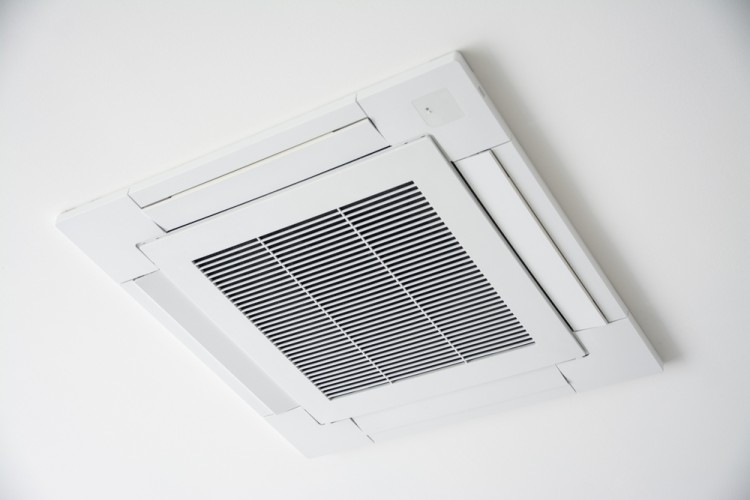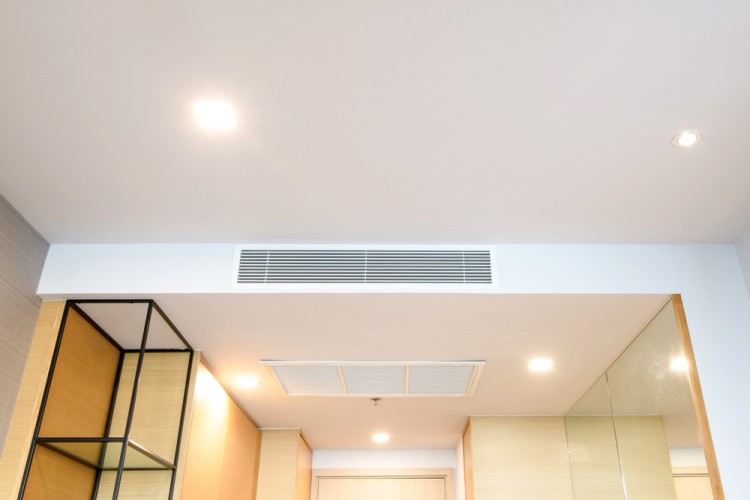
When it comes to keeping your home comfortable year-round, a ducted reverse-cycle air conditioning system is hard to beat. When we think about these systems, Daikin is a name that naturally comes to mind straight away. DaikiN is one of the most trusted names in the HVAC industry, and is known for its high-quality, efficient systems.
However, choosing the correct unit size is critical – a unit that’s too small will struggle to maintain the desired temperature, while one that’s too large can lead to wasted energy and higher bills.
But with so many unit sizes available, how exactly can you really choose the right one for your space? Don’t worry—we’re here to help! In this guide, we’ll walk you through everything you need to consider when selecting a Daikin ducted reverse cycle unit.
First, let’s make sure we’re on the same page about what a ducted reverse cycle system is and how it works.
Unlike a traditional air conditioner that only cools, a reverse cycle system can both heat and cool your home. It does this by using a heat pump to extract heat from the outside air and move it inside during winter and reverse the process in summer to keep your home cool.
A ducted system distributes the conditioned air through a network of ducts hidden in your walls, floors, or ceilings. This allows you to control the temperature in each room or zone of your house independently for maximum comfort and efficiency.
Now that we know how these systems work, let’s look at the key factors that determine what size unit you need:
The square footage of the space you want to heat and cool is the most important factor in determining the unit size. A unit that’s too small will struggle to maintain a comfortable temperature, while an oversized unit will cycle on and off too frequently, wasting energy and wearing out faster.
As a general rule of thumb, you’ll need about 1 ton of cooling capacity per 600 square feet. So for a 2,400 square foot home, you’d need a 4-ton unit. However, this is just a rough estimate—there are many other factors to consider.
The number of rooms, levels, and open spaces in your home can all affect your sizing needs. More rooms and walls mean more surface area for heat to transfer through, so you may need a larger unit. High ceilings also require more capacity to condition the extra volume of air.
How well your home is insulated and sealed against air leaks has a big impact on your HVAC needs. Good insulation helps maintain stable temperatures, so you can get away with a smaller unit. Poor insulation means your system has to work harder.
The number, size, and type of windows also matter. Large windows, especially on the south and west sides of your home, let in a lot of heat from the sun. This solar gain increases your cooling load in the summer. Double or triple-pane windows with low-E coatings can help mitigate this effect.
The local climate and the positioning of your home also play a role. If you live in an area with very hot summers and cold winters, you’ll need more capacity than in a more temperate region. Likewise, a home that gets a lot of direct sun exposure will have different needs than one that is mostly in the shade.
Appliances like ovens, dryers, and even televisions and computers give off heat when in use. In a home with a lot of these heat-generating devices, you may need to size up your air conditioner to compensate.
People also generate heat and humidity. The more people living in your home, the more capacity you’ll need to keep everyone comfortable. This is especially important to consider if you often have guests over or host large gatherings.
Are you looking for ducted heating in Blackburn, Box Hill, or Broadmeadows? We can help. Get in touch today for supply, installation, repair and maintenance.

Once you’ve considered all these factors, you can start looking at specific Daikin models. Daikin offers ducted reverse cycle units ranging from 2.5kW to 20kW, so there’s a size for every home.
Some of their most popular models include:
All Daikin units are equipped with advanced inverter technology for precise temperature control and maximum efficiency. They also feature quiet operation, built-in air purification, and connectivity options for smart home integration.
The first step in determining the right unit size is to accurately measure the rooms you intend to heat and cool. This includes measuring the length, width, and height of each room, as well as the size and number of windows and doors.
It’s important to measure both the total floor area and the volume of each room, as this will help you calculate the overall heat load.
The heat load is a measure of the amount of heating or cooling needed to maintain a comfortable temperature in your home. It takes into account factors such as room size, insulation, window size, and local climate conditions.
A simple way to estimate the heat load is to multiply the total floor area by a heat load factor, which varies depending on the level of insulation and other factors. For example, a well-insulated home may have a heat load factor of 125-150 watts per square metre, while a poorly insulated home may require 200-250 watts per square metre.
Once you have calculated the heat load, you can match it to the specifications of different Daikin units. Daikin provides detailed information on the capacity of their units, allowing you to select the model that best matches your calculated heat load.
It’s important to choose a unit that has a capacity slightly higher than your calculated heat load to account for any additional factors that may affect performance.
While it’s possible to estimate the size of the unit you need on your own, it’s always recommended to consult with a professional HVAC technician before making a final decision.
A professional can perform a more detailed assessment of your home, taking into account factors such as airflow, duct design, and local building codes. They can also provide valuable advice on the best unit for your specific needs and verify that the installation is done correctly.
One of the most common mistakes homeowners make is choosing a ducted reverse cycle unit based solely on price. While it’s important to stay within your budget, selecting a unit that is too small or too large in an effort to save money can end up costing you more in the long run.
An undersized unit will struggle to maintain the desired temperature, leading to higher energy bills and more frequent repairs, while an oversized unit will waste energy and result in uneven temperatures.
Another mistake is ignoring the advice of a professional HVAC technician. While it may be tempting to rely on online calculators or the advice of friends and family, a professional assessment is the most accurate way to determine the right unit size for your home.
A professional can take into account all of the factors that affect heating and cooling load, ensuring that you choose a unit that is perfectly matched to your space.
Need reliable ducted heating in Thornbury, Roxburgh Park, or Reservoir? We’re here to assist.
Finally, many homeowners overlook the importance of regular maintenance and upgrades. Even if you choose the right unit size, neglecting to maintain your system can lead to reduced efficiency and comfort over time.
It’s important to schedule regular maintenance checks with a professional to keep your system running smoothly and to consider upgrading your unit as your home and needs change.
While it’s good to have a basic understanding of sizing factors, consulting with a professional is the most reliable way to get the perfect unit for your home. An experienced HVAC technician will perform a thorough load calculation, taking into account all the variables we’ve discussed and more.
At Absolute Airflow, we have a team of Daikin Specialist Dealers who are always ready to lend a helping hand p. We’ll work with you to assess your specific needs and recommend the ideal ducted reverse cycle system for your space. Our professional installation guarantees optimal performance and efficiency for years to come.
Contact us today to get started on your journey to perfect home comfort. With our expertise and Daikin’s industry-leading technology, you can rest assured you’re making a smart investment in your home and your family’s well-being.

© Copyright 2025 - Absolute Airflow - All Rights Reserved